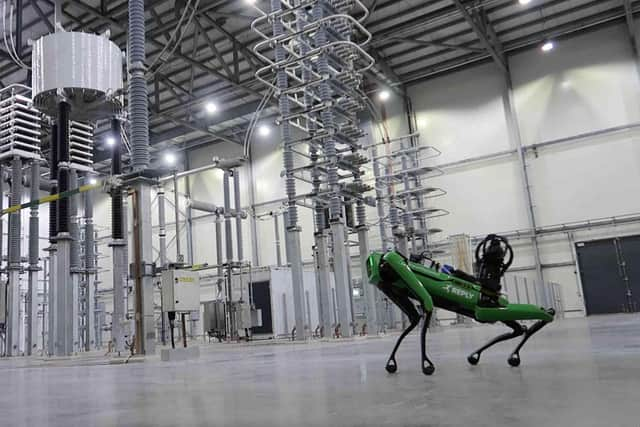Boston Dynamics robot Spot used by National Grid engineers in Blyth to inspect North Sea Link interconnector
and live on Freeview channel 276
Spot, a made by Boston Dynamics, is being trialled to help find faults at the North Sea Link interconnector.
The robot is around the size of a labrador, moves similarly to a real dog, and is equipped with imaging and 3D scanning equipment.
Advertisement
Hide AdAdvertisement
Hide AdNational Grid interconnectors operations director Jon Davies said: “We are always looking at innovative ways to improve site safety and the availability of our assets.


“This trial has given us the chance to see whether using robots like this could be part of our maintenance programme in the future.
“Interconnectors play a vital role in the UK’s energy system and last month National Grid interconnectors had their busiest January on record with 2.6 TWh of power transported across the five cables between the UK and our partner countries.”
Operated by robotics company Roboverse Reply, Spot can access areas that human engineers are not able to, reducing outage times for the apparatus and improving safety.
Advertisement
Hide AdAdvertisement
Hide AdNational Grid enlisted experienced robotics company Roboverse Reply to assist with the trials and if successful will look to roll the robots across its sites next year.
Marek Matuszewski, manager at Roboverse Reply, said: "National Grid's use of mobile robots, such as Spot, has the potential to be highly effective.
“These robots are able to capture data more accurately and regularly than humans, thanks to sensors with thermal vision or acoustic cameras that allow for early detection of issues.”
If the Blyth trial is successful, the robots could be rolled out permanently at National Grid sites.